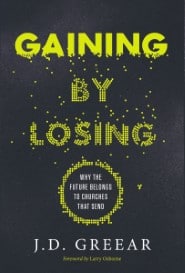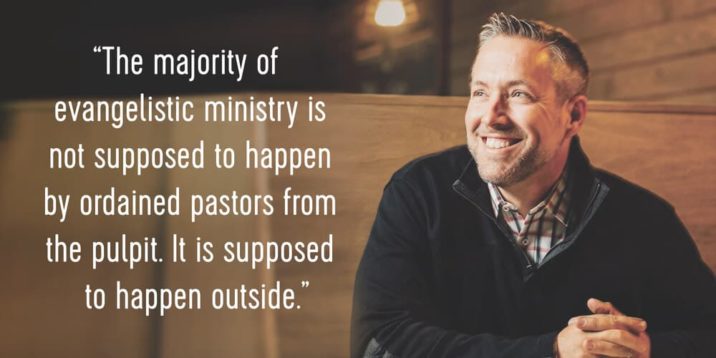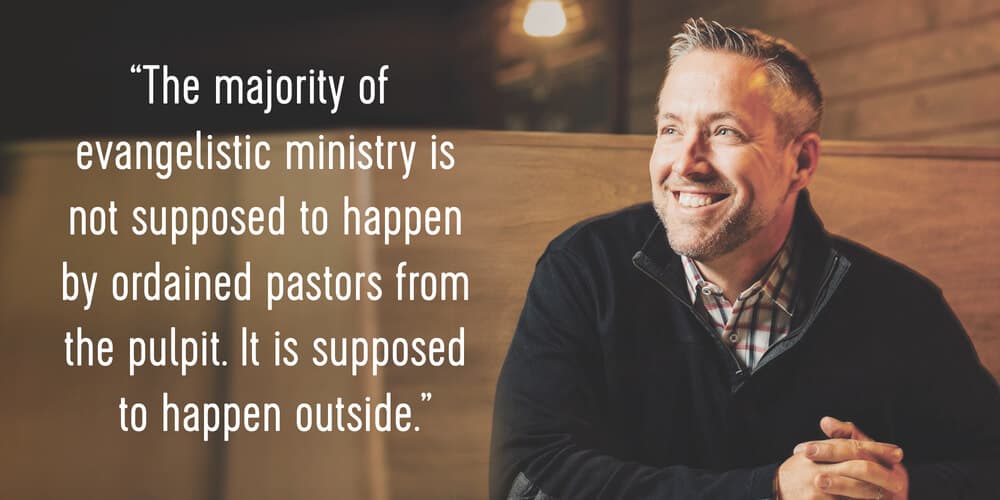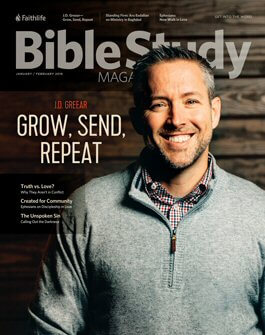The January/February issue of Bible Study Magazine features J.D. Greear—pastor of The Summit Church in Raleigh-Durham, North Carolina. In college, Greear’s study of Romans 2 led him to a life-altering realization: “Paul talks about those who are not under the law still being held responsible for the law because God has given the law to them on their hearts. Suddenly my heart understood that there were a couple billion people out there who had never heard the name of Jesus but were still responsible under the law.”
This realization propelled him toward seminary, and years later, he’s a pastor of a big church with an even bigger emphasis on sending missionaries.
In Jessi Strong’s interview with Greear, he explained why sending capacity matters more than seating capacity in churches.
Seating capacity
In 2002, when Greear took a job pastoring The Summit Church (then called Homestead Heights Baptist Church) of Raleigh-Durham, North Carolina, church attendance hadn’t grown in years. Over the next 10 years, the church relocated and changed names, and by 2015 it was home to 9,000 weekly attenders. It’s the kind of success story many churches would love to duplicate.
But while The Summit’s attendance rate may signal success to others, Greear puts little stock in that number. “My parents came back to the faith the year I was born. I’m grateful that their church didn’t simply count them, baptize them, and then move on to the next hundred. If my parents’ church had done that to them, I might not have grown up in a home of people who really knew what it meant to follow Jesus.”
Greear didn’t always feel that way. When The Summit Church began growing rapidly in 2002, attracting members from all over Raleigh-Durham—and often from other established churches in the community—Greear admits to having mixed motives for growth. “For the first few years of my ministry, I was saying, ‘Thy kingdom come,’ but what I really meant was, ‘My kingdom come.’ God confronted me on this when I started praying for revival in Raleigh-Durham. I was praying that God would move like nothing he’d ever done here. And I felt the Holy Spirit prompting me, asking, “What if I answer that prayer and send revival here, but I choose to work through someone else’s church? What if I bring spiritual awakening to your community, but your church doesn’t grow as a result? And I knew I wasn’t nearly as excited about that kind of revival.”
That conviction led to The Summit’s transformation into a church that plants other churches. Greear began asking how The Summit could transform from a “country club for Christians” to a church aimed at blessing and serving their community. “In that first year, God readjusted our focus. We all had to put aside our personal preferences for music, church size, and other things. That became secondary to seeing God reach people.”
Sending capacity

Greear doesn’t focus on the weekly attendance number, but that isn’t to say he disregards numbers altogether. He closely tracks the number of people being sent out from The Summit to the international mission field and those sent to start other churches and ministries in the U.S. “Churches really fit in the categories of three kinds of ships. Some churches are like cruise ships—luxury for people who are already Christians. Some churches are battleships. They recognize the mission, which is good, but they try to accomplish it as a unit. The best churches are like aircraft carriers—they are not near the battle, but they equip and send planes to carry the battle where the enemy is. Our success isn’t in our seating capacity, but our sending capacity.”
Greear’s sending goals are big and long-term: He anticipates it will take 30 years to send out 5,000 ministers to plant 1,000 churches. He and his congregation are committed to the work, even when it takes sacrifice. “Every year we stand 120 people across our platform who are members leaving our church to go to another city or nation to plant a church. Most of them are actively serving as volunteers here, so when they leave, there’s a big gap. But we rejoice in that, because training and sending is how the church should function.”
Since they established their sending goals in 2010, The Summit Church has sent 202 church members overseas and has planted 113 churches across the United States. “Our long-term goal is to plant 1,000 churches in one generation. We’re also working to start 100 community-blessing organizations—ministries for the homeless, orphans, single parents: the various segments of our community who are in need. And we encourage our congregation to work with established local ministry organizations if there’s someone already doing good work in our community in one of these areas.”
Read more interviews like this in Bible Study Magazine; subscribe today.







